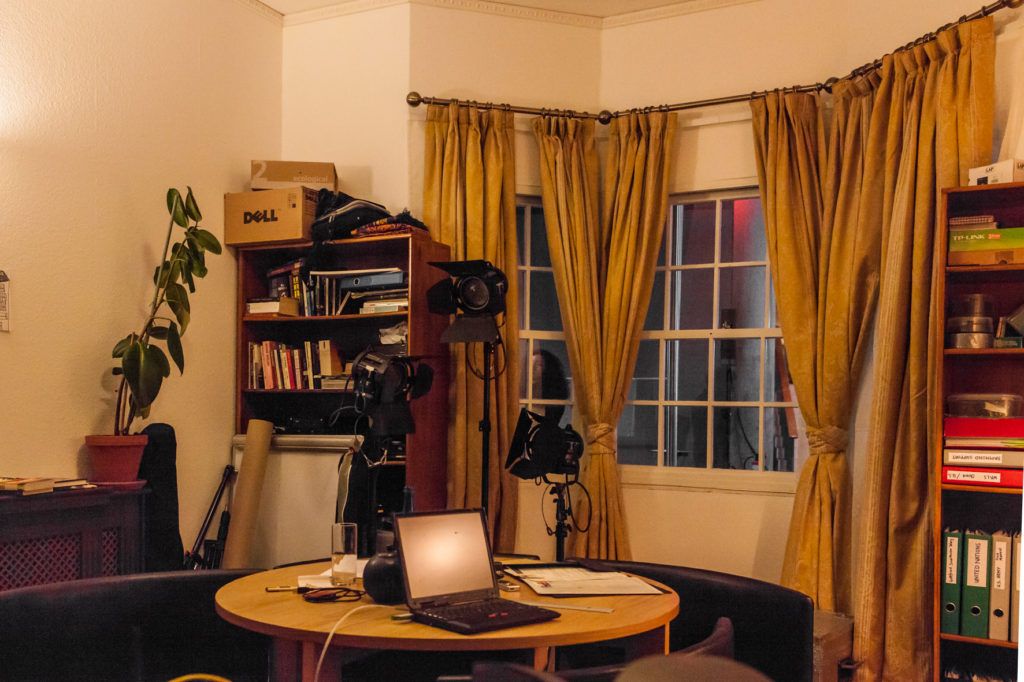Every system is composed of interactive entities operating within it in more or less voluntary fashion. Neurons, for example, can’t exist by themselves. They need to be in constant interaction with one another in order to survive, spreading neurotransmitters and creating connections. In the same way, human interdependency with other things and creatures has never been more apparent; in a moment when social behaviours are becoming increasingly mediated by software, algorithmically processed and immediately targeted.
In the Nervous Systems – Quantified Life and the Social Question exhibition –curated by Anselm Franke and the Tactical Technology founders Stephanie Hankey and Marek Tusynski –the anatomical arrangement is used as an analogy for analyzing the ways in which huge flows of information are managed and exploited, presenting its less visible entanglements; behavioural patterns, predictive analytics and privacy policies.

The exhibition’s design itself is a metaphor of this new (modern) world order, conceived by architect Kris Kimpe. It’s constructed from a scaffold-like display system, which aims to illustrate tangibly how human interaction with machines has transformed our perception, ourselves becoming what the Nervous Systems publication calls “self-entered data points”. Three parts overlap across the space, dividing the exhibition conceptually into the work of 25 artists expanding through its grid-like poles, with reference spots featuring contributions from relevant theorists, and an interactive space for purchasing knowledge instead of commodities, called ‘The White Room’, at one side of the immense HKW hall.
Stéphane Degoutin and Gwenola Wagon’s ‘World Brain’ (2015) and Harun Farocki’s ‘Leben-BRD/How to live in the FRG’ (1990) video works depict issues such as the controlled self or data centres, while making visible those hidden sides of a datafied reality. RYBN.org’s ‘Algorithmic trading freak show’ (2013-14) is a horizontal glass cabinet showing a set of obsolete algorithms, formerly used for high frequency trading. On the other side of the HKW hall, a to scale cross section of a building contains !Mediengruppe Bitnik’s ‘Delivery for Mr. Assange –Assange’s room’ (2014), a reconstruction from memory of the room at the Ecuadorian embassy in London where the WikiLeaks founder sought political asylum in 2012. Touching reminiscences of conceptual art, such as On Kawara’s ‘I Am Still Alive’, (17.3.1995), Stephen Willats’ ‘I Don’t Want To Be Like Anyone Else,’ (1977) and Henrik Olesen ‘How Do I Make Myself a Body?’ (2007) give a more tangible and romantic approach to the datafied self. In another corner, Lawrence Abu Hamdan’s ‘Contra Diction (Speech Against Itself)’ (2015), ironically and poetically questions certain aspects of lie detecting through speech.

Some of the vertical metal poles of the Nervous Systems scaffolding blossom into triangulated surfaces that resemble bulbous synaptic knobs. There are the ten reference spots that expand on the exhibition’s theoretical narrative with contributions from Orit Halpern, Lawrence Liang, Matteo Pasquinelli and more. These are combined with more didactic and informational material, such as an actual Special Operative ID with the picture of a dog (instead of a human), the ‘Imaginary Boyfriend’ app, some unpleasant footage of drugged prisoners telling “the truth” and the history of Wonder Woman and its connection with the invention of the polygraph.
Finally, the White Room generates an encounter with our daily devices through a Genius bar full of iPads and three podiums sorted into the categories: ‘Normal is boring’, ‘Something to hide’ and ‘Big Mama’. The devices are loaded with apps for security and privacy rather than commercial purposes. ‘Normal is boring’ is a collaboration with the creative platform La Loma where statistics and graphics are brought into three-dimensional models in a user-friendly setting for the public to understand complex information. ‘Something to hide’ is a response to the overused claim “nothing to hide” in relation to the individual self within a quantified society. It displays several random-looking artifacts, such as Ai Weiwei’s stuffed toy-bag ‘Panda to Panda’ (2015) –alluding the slang name for the Chinese secret police and peer-to-peer computing –or the video-work ‘Life Is Too Short’ (2010) from Veridiana Zurita where the artist turns herself into several YouTube self-help gurus. The last podium, ‘Big Mama’, presents apps and technologies used by governments and general users, such as the ‘Sickweather’ app, Anonymous User’s ‘credit rating system’ and the United Nations High Commission for Refugees ‘Jordan: Iris Scanning Program in Action’ (2016). Those technologies are generally used to target, sort and classify a population in order to forecast or recreate an idea of the self, while becoming progressively more banalized.
The number of neurons in the human brain is of the same scale of the number of people on earth, whereas the amount of data being generated appears infinite. These artificial systems have been created in our own likeness but their expansion has gone further than what our understanding can reach. Through a pretty didactic, interactive, aesthetic and political approach, Nervous Systems enables the average person to become familiarized with this new and omnipresent reality driven by data analysis, reality mining, pattern recognition and forecasting.**













